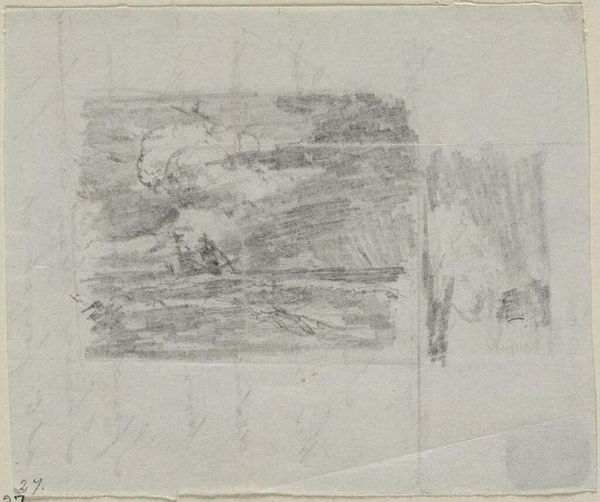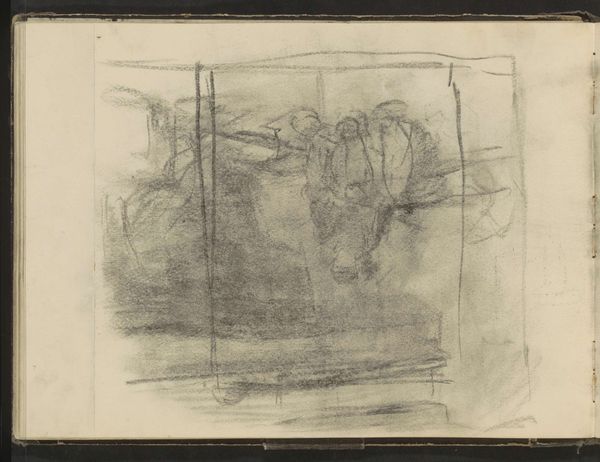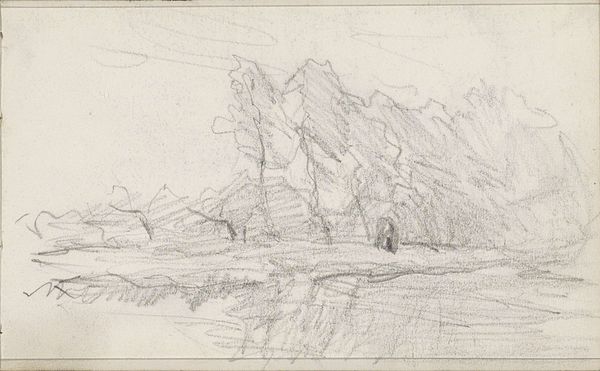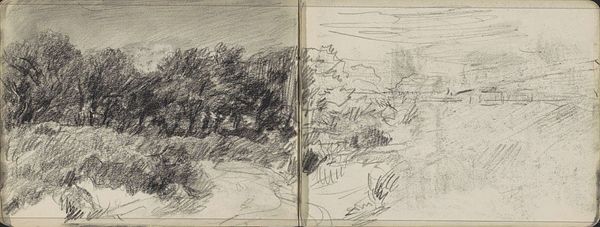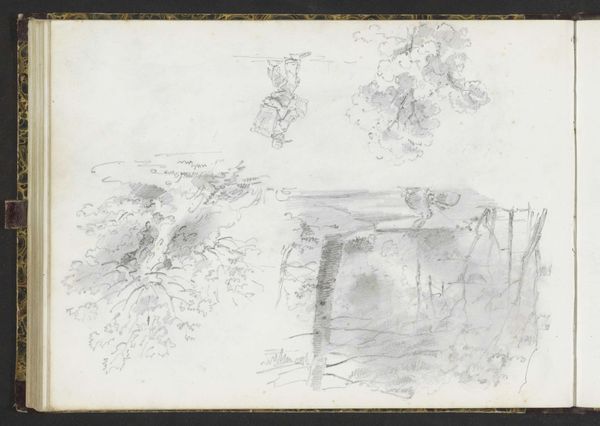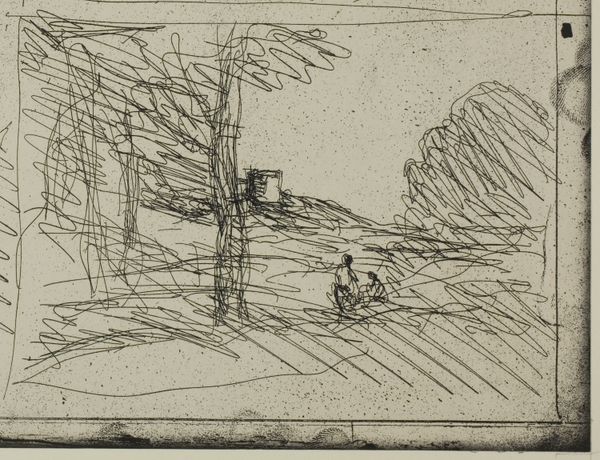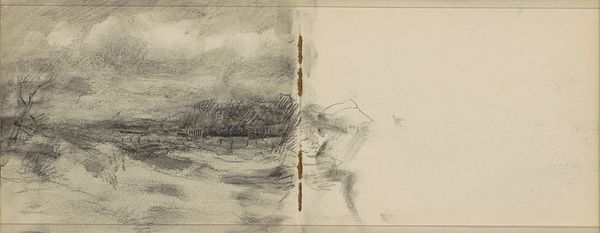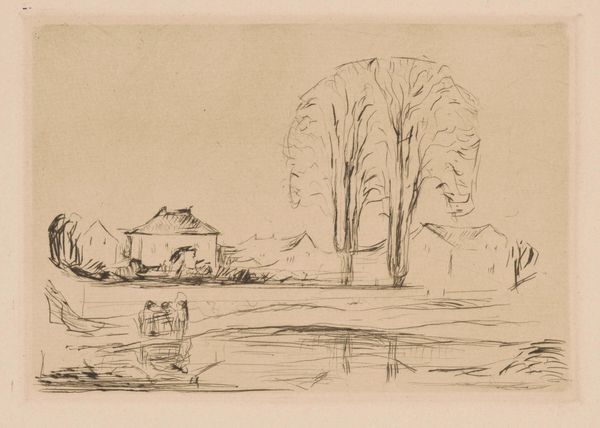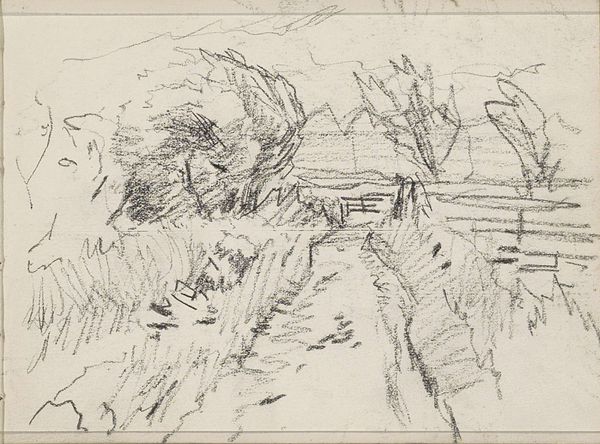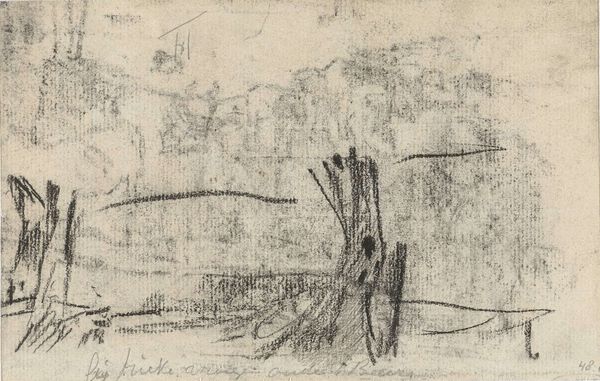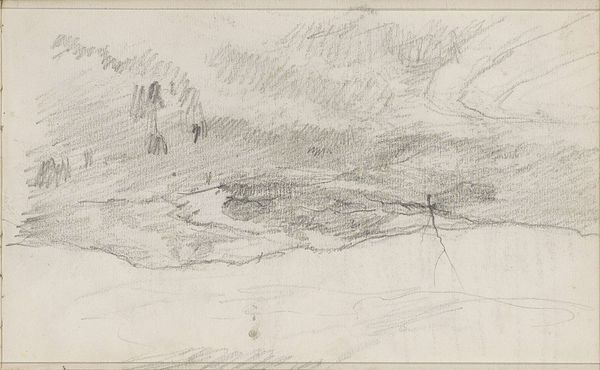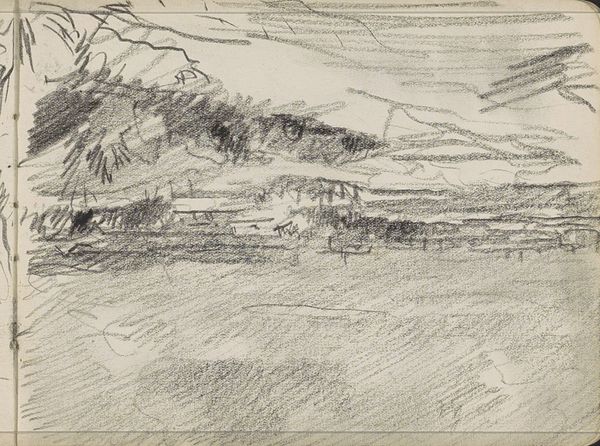
The Garden of Pericles; The Painter’s Lane; Scrawl; The Large Woodcutter; The Tower of Henry VIII 1856
0:00
0:00
Copyright: Public Domain: Artvee
Camille Corot made this etching, a suite of landscape studies, during the nineteenth century. Note how Corot repeatedly employs the symbol of the tree—a motif central to human experience. From the Tree of Knowledge in Eden to the World Tree of Norse mythology, trees often represent life, growth, and interconnectedness. Here, they dominate the composition, anchoring each vignette. Look at the top right scene where the tree frames two figures, their forms echoing the tree's verticality. This recalls earlier depictions of the Tree of Life, where human figures are often placed at its base, seeking knowledge or enlightenment. But the symbolism shifts. In the bottom right, the tree stands near a small building and figures, perhaps a sign of how nature interacts with human constructions. Do these trees suggest a subconscious longing for a lost paradise or an acknowledgement of nature's enduring presence within our constructed world? This image may then act as a vessel for conveying emotions, memories, and cultural meanings. The tree persists, morphing from a symbol of divine knowledge to a reminder of our earthly ties.
Comments
No comments
Be the first to comment and join the conversation on the ultimate creative platform.
